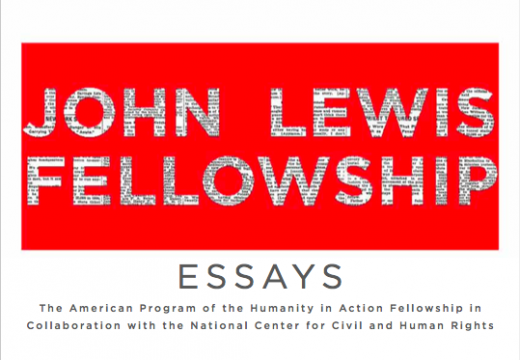Details
Article
Something I have been struggling to understand is how the US never managed to acknowledge their history of slavery, human rights violation and settler colonialism. Through talks by scholars such as Dr. Saito and Dr. Anderson, I was introduced to the paradox of the widespread savior narrative in the depiction of the US participation in WW II, flourishing while forced assimilation and land extraction continued to be the reality of native American, and Jim crow and institutionalized racism characterized the South.
Since the program also gave space to excursions such as visits to various museums and memorials I witnessed the way US history has been fragmented and distorted in order to uphold an imaginary patriotic past characterized by unity, horizontality and democracy.
If I were to describe the visit to Stone Mountain in one word, it would be bizarre.
If I were to describe the visit to Stone Mountain in one word, it would be bizarre. I found myself in a world of dinosaurs in pastels, confederate flags, uncritical heroization of discriminatory and pro-slavery historical figures, surrounded by an exquisite natural environment. Even though we had been prepared for the controversy of the place, I was shocked by the way the Confederate Memorial exhibition honored president Jefferson Davis as well as the Confederate generals and their participation in the civil war, without even mentioning slavery and how it played a fundamental role in the conflict between the North and the South. Furthermore, a construction of ‘Southern’ and ‘Georgian’ identity seemed to be somehow obvious, yet subtly conducted through the language used to present the confederates.
I would agree with Rose, the NAACP chapter president’s view on the memorial, as an ahistorical form of government sponsored hate and a monthly meeting place for members of the KKK.
Robert Lee, the commanding general of Confederate army, was described as one of the South’s ‘most respected and beloved figures’, ’a master military strategist’ and ‘symbol of accepting defeat with dignity and working to restore the union between north and south”. On top of this, ‘The dream’ served as the heading of the section on the ideational ground of the memorial which emphasized how the building of the Confederate memorial ‘was the dream of several Georgians’.
In preparation for the program we had to read an article on the controversy of Stone Mountain and after experiencing it, I would agree with Rose, the NAACP chapter president’s view on the memorial, as an ahistorical form of government sponsored hate and a monthly meeting place for members of the KKK. Half of the museum was dedicated to portray the process in which the Carved image of the three confederates was created in terms of the work of the artist and material used, rather than portraying how the confederates were fighting to uphold their so called ‘state rights’, which meant their right to dehumanize and propertize African Americans.
To a certain extent, I did expect to encounter a rather patriotic and one-sided perspective on The Civil War at the confederate memorial. However, my expectations for the Atlanta History Museum were quite different. Ironically the exhibitions I had a chance to experience, which included ‘The City of Atlanta’, an exhibition on ‘Native Americans’ and one on The Civil War, seemed to portray rather un-nuanced and glorified versions of history, where slavery, genocide, present day institutionalized racism, displacement, mass incarceration and income inequity seemed to be erased.
A woman who worked at The Atlanta History Museum explained in an apologetic manner, how the civil rights exhibition had not been renewed over the past 20 years, and that they were planning to make some major changes by emphasizing how slavery and the oppression of African Americans played a fundamental role in the war.
Shifting historical agencies
I have had a lot of trouble understanding the term restorative justice and the way in which it can be introduced, organized and practiced. However, through group discussions and assignments, lectures and readings I have somehow come to the understanding of what a restorative justice approach might include. A crucial aspect must be an active acknowledgement of the historic and present day oppressive structures. Among other things, a portrayal of history in which the people who has been and currently is ‘invisible’ in popular historical chronicles, should be given agency to nuance and actively communicate the historical narrative, in which their voices, oppressions and livelihood has been neglected.
“The challenge of curating is to not only present blackness as suffering and violence, but to recognize the rich culture, genius and achievements.”
An example of a place where history is constantly being reclaimed, redefined and deconstructed is the Clark Atlanta University Art Gallery. It was an enriching experience to explore the history of civil rights and contemporary issues characterizing black experience through engaging with exquisite visual artworks. The Curator Dr. Maurita Poole said something relating representation which I found extremely important: “The challenge of curating is to not only present blackness as suffering and violence, but to recognize the rich culture, genius and achievements.” Furthermore, the gallery experience inspired me to reflect upon the unique learnings of this fellowship through drawing and painting (see attached drawings).
Restorative justice in a Danish context
Reconstruction and airbrushing history is not unfamiliar to me. Even though there has been a widespread acknowledgement and recognition of the holocaust, I would argue that certain aspects of the historical narrative on the Danish resistance against the Nazi occupation has been rather romanticized. It is always told how Danish fishermen, out of solidarity, helped the Jews to go to Sweden. With a Jewish family, part of which had to flee to Sweden. I have, however, been told how they had to pay a rather big amount of money for a leaky boat. Some of my family members sat in water for several hours, resulting in the case of one relative, in decease and death. These fishermen of 1943 could also be portrayed in a similar way as the human smugglers, who currently ship refugees crossing the Mediterranean Sea for an amount of money.
These fishermen of 1943 could also be portrayed in a similar way as the human smugglers, who currently ship refugees crossing the Mediterranean Sea for an amount of money.
Having to constantly reflect upon ways in which justice can be restored have made me reconsider how Denmark has treated its highly oppressive colonial past. This year is the 100th year after Denmark ‘gave up slavery’ in the ‘Danish West Indies’, now known as the US Virgin Islands. However, it has to be emphasized that the Islands were sold to the US, which continued the slavery. I was barely taught about Denmark as a colonial power of US Virgin Islands, Greenland and The ‘Gold Coast’ of Ghana in school and the few films I have watched on the issue has been highly biased, for example portraying the colonizers as heroic figures with a passionate love for the women of ‘the other’ and most importantly a part of a fictionalized ‘distant’ history. Furthermore, Denmark tend to bury its hyper-oppressive past through constructing a self-image of being relatively progressive in a broader historical context through priding itself with being one of the first ‘abolitionist nations’.
I was barely taught about Denmark as a colonial power of US Virgin Islands, Greenland and The ‘Gold Coast’ of Ghana in school and the few films I have watched on the issue has been highly biased
The Danish prime minister recently attempted to make a public apology to the people of the United States Virgin Islands and the Danish state chose to financially support some scholarship programs at local universities. On this occasion, different museums have chosen to hold exhibitions on Danish slave owners and the history of the former colony. Learning from the US context made me wonder how the situation would have looked like if there were any descendants of the former colony living in Denmark. I personally don’t believe that some temporary exhibition and a small donation to education is comparable to the immense wealth extracted from enslaved labor and natural resources or able to restore hundreds of years of injustice and stolen lives.
Having had the privilege of immersing into the socio-political and historical context of the Civil Rights Movement in the South through the John Lewis Fellowship has inspired me to further investigate the positions of different populations, narratives and historiographies in a Danish colonial context. I’m interested in what has been added and left out, and how actors in the former colonies relate to and deal with the past and its immense significance for the present moment.
A day of the program was dedicated to exploring restoration. Professor Hooker argued that restorative justice as a tool and approach is a somehow flawed and ambiguous term, since trauma is transgenerational and what has been taken away can’t possibly be given back. Furthermore, the descendants of oppressors who are born with the inherited privileges in a system of institutionalized discrimination, will not necessarily understand or feel any responsibility of the harms of the past.
“We just wanted to have the same way of living that was nurtured and protected.”
In honor of Dr. Roselyn Pope
Narrow spectacles sliding down to the tip of her nose bringing back fragmented memories of sledding on yellow plastic bags, navigating a landscape of turbid urban snow. Her intellectual eyes are moving in a pace too fast for her deep purple glasses to follow. She has given birth to three PhDs and ‘An Appeal for Human Rights.’ Like many other women of the movement, her excellence and integrity was too threatening for the androcentric public sphere.
“We just wanted to have the same way of living that was nurtured and protected.” She doesn’t seem to be interested in answering the three mandatory questions for every female speaker: “how do you practice self-care?”, “how do you deal with your own trauma?”, “how do you prioritize your own healing?” The air thickens like vanilla cream when her soothing words dance their way out in the crowd. “We knew we were right,” she says looking at us as if we were a disruptive mosaic artwork, paying attention to every quirky piece of broken glass, mirror and psychedelic looking plastic. “Justice is restored whenever every human being on this earth is equal”. A statement that makes me feel confidently lost in the fourteen demands she persistently typed during a time where authorities simply denied that they could have been written by two youthful hands of color. Several hundreds of seasons later, that same document floats in the sewage of the internet. The demands might have been soaked, but they have not yet undergone the natural process of decomposition, becoming one with the swamp of macabre semi-anonymous, semi-factual, semi-radical truths. Why could these demands easily seem like a groundbreaking Facebook status from a self-proclaimed progressive millennial?
Hint: maybe because the US denies the premise of its own existence. Maybe because the concept of settler colonialism is treated as alien and faceless as SUBJECTS who happens to be Black, Latinx, Asian, undocumented, Muslim or LGBT+. According to Dr. Saito equal protection symptoms protects white property: the construction of land and the property of personhood. “Equal treatment- theory” establish the ‘pure innocence’ of those who throughout history, have been comfortably indulging the foam of the cream. It buries the difference between security and privilege, self-determination and affirmative action.







